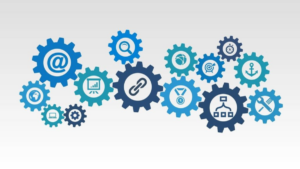New Digital Age (NDA), in association with LiveRamp, is spotlighting the men and women championing a data-led revolution in the marketing industry. ‘Meet the Revolutionaries’ focuses on the efforts of industry executives who are pushing digital marketing into a new era of data collaboration.
Here, Irin Rahman, Chief Data and Technology Officer for PHD UK reveals why innovation depends on challenging your biases and being willing to accept that change is always in the air.
Tell me about your current role.
I’m the Chief Data and Technology Officer for PHD UK. Essentially, at the agency, I’m responsible for all things data and tech on behalf of the clients. Whether we’re talking about data collection, project delivery, measurement, or post-campaign analysis, my team takes the lead for every type and size of data set. My department also looks after all the technology, innovation, and productization of services related to data, building on our robust and battle-tested framework of technology.
Can you give an example of a time when you personally have helped to drive innovation?
When I joined [PHD UK], one of the key areas we were looking at was how to utilise our data and tech resources in a better way. Our systems contained a lot of manual work and inefficiencies, which affected the speed at which we could deliver value for our clients. One of the things that people usually say is, “We have a lot of data, let’s bring in more people to process it”. The answer isn’t bringing in more people, it’s creating automated systems to process the data and deliver insights from it. For me, it’s important to lean on technology to do the hard work, freeing up our people to think more about improving processes and outcomes.
My team and I pushed for a connected data ecosystem for PHD – something that is unique within our group, but not the industry. For me, it just makes sense to have all the data connected in one place so everyone, from your strategists to your activators, measurement to the leadership team, can access whatever they need when they need it.
Delivering this ecosystem required us to collaborate with our third-party technology providers, as well as AWS, Twitter (now X), and Meta. However, it was all worth it; we now save a huge amount of time across our team, and we’ve been able to make our data more accurate, as well as decrease the time between measurement and analysis. We now package this connected data platform as a service and offer it to our clients, improving the performance of their in-house teams as well.
What are the most common challenges to innovation?
The challenge is getting people to buy into a vision. If it already exists, it isn’t innovation and buy-in is easy to get. If all you have is a problem and an idea, getting the buy-in to commit resources and enact change is more than half the work. The issue is that people don’t want to change the status quo. There is a real lack of that in big corporations because it’s a risk. It’s hard to break out of that mentality and it requires a lot of “proving of concept” to make people say “OK, that’s a vision I can believe in”.
We’re lucky to live in a time when technology enables you to do anything you can imagine. We all need to be a bit braver, take small risks, build proof of concepts, and support innovators within our organisations; that is when great things can happen and be discovered.
What tips can you offer others hoping to drive innovation?
It’s really important to challenge your natural biases; being open-minded and not fearing new ideas and concepts is really important. So much of working in organisations is choosing if something is a good idea that we should enact now or a bad idea that we should avoid implementing; we forget that there are also interesting ideas in between that need us to put in research.
It’s OK to break things, make new things and try to do things quickly internally, but don’t forget to record your results. It’s called “Test and Learn” – fail quickly, learn quickly, and apply the learnings into your day-to-day quickly. It’s the fundamentals of the agile way of working and it’s the fastest way to innovate.
How do you think digital marketing might evolve over the next few years?
I do believe that the future of marketing is one of constantly accepting new technologies that we are sceptical of today. Prior to 1998, there was no such thing as Google or Googling, now it’s a household name and a verb. In marketing, we should be looking at emerging technologies with the idea that they could be the next Google.
We have these amazing new technologies reaching maturity, such as AI. AI has been around in some form for a while, but now that they are more mature, we need to make it part of our operations. Just like we did with Google and social media.
The reality is that these new technologies will soon become the centre of businesses everywhere. There will be no such thing as a tech team that sits separately from the marketing team; each team will have their own technical members delivering data, tech, and tools for the team’s specific needs. Today, those teams are all talking to each other, and they are starting to understand each other’s world a bit better.
It’s important to accept things might look different to how they are right now. If copywriting and content creation becomes more automated with AI, maybe we edit the text and creatives more than today. The quicker we adapt to these changes, the easier it will be for us because that will free us to think and do the smart work, and not be constantly bogged down by admin tasks.








